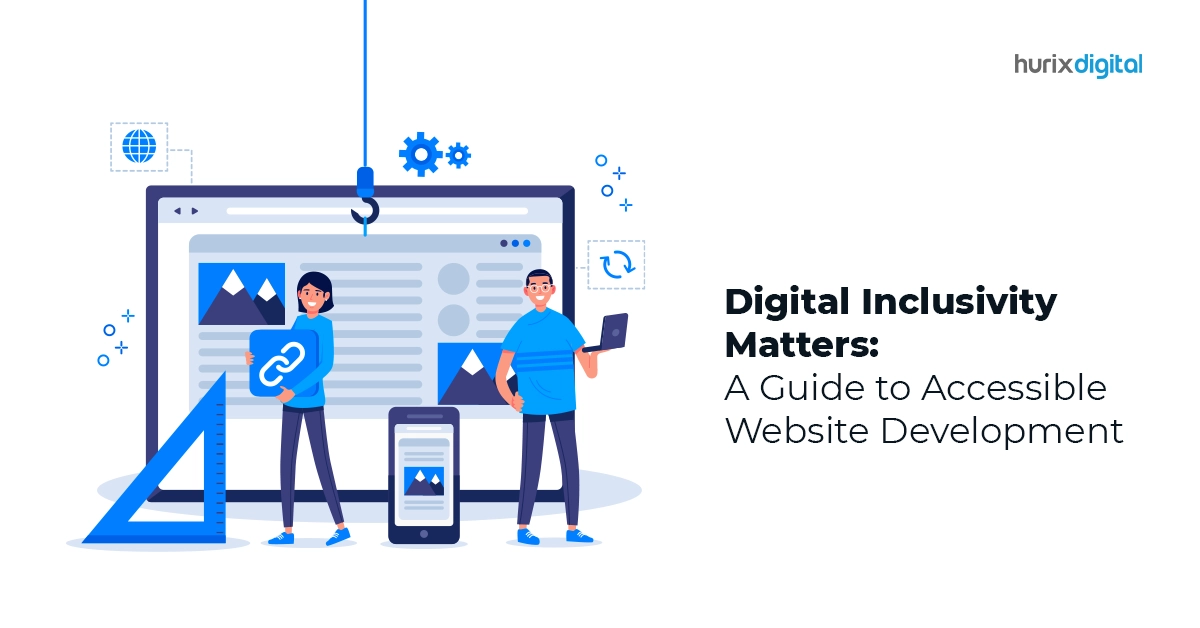Summary
This easy-to-read guide explains what web accessibility is, why it matters for inclusion, legal compliance, and business growth. It provides website owners a step-by-step approach to accessible design covering content, development, testing practices along with examples of common techniques that benefit all users. The post also emphasizes that optimizing for accessibility boosts overall usability.
In an increasingly digital world, it’s crucial that websites are designed to be inclusive for all users. That’s where digital accessibility comes in. Digital accessibility refers to the practice of making websites, apps, and other digital tools usable for those with disabilities or other limitations. An accessible website should be designed so that it can be navigated and understood by the widest range of users possible.
Table of Contents
- Why Digital Accessibility Matters
- Creating Accessible Websites: A How-To Guide
- Accessibility = Usability
- The Path Towards Inclusivity
- Conclusion
Why Digital Accessibility Matters
“Digital accessibility” benefits users with visual, hearing, cognitive, or motor impairments by making web content more perceptible, operable, understandable, and robust. Digital accessibility enables those with disabilities to perceive, understand, navigate, interact with, and contribute across the digital world. Besides users with disabilities, digital accessibility also benefits the aging population dealing with gradually declining abilities.
Building accessible websites fosters inclusion. With an accessible website, businesses can reach out to an often overlooked 15% of the population with some form of disability. That’s a huge potential user base to engage.
Apart from the social motivation, there’s also a legal incentive. An accessible website complies with disability regulations like the Americans with Disabilities Act (ADA). It eliminates the risk of legal penalties and protects your brand reputation.
Also Read: How Vital is Web Accessibility in The Digital World?
Creating Accessible Websites: A How-To Guide
Crafting an accessible website requires strategic planning right from the initial stages. Here’s presenting a step-by-step guide to developing accessible websites:
1. Set accessibility standards Determine what accessibility standards you wish to meet. The Web Content Accessibility Guidelines (WCAG) 2.1 set by the World Wide Web Consortium (W3C) is the internationally recognized standard. Familiarize yourself with the four WCAG guiding principles — perceivable, operable, understandable, and robust.
2. Planning and content strategy Plan your website information architecture, navigation system, content, and functionality while keeping accessibility at the core. Create textual content that is legible, logically structured, and easy to understand. Have meaningful text alternatives like “Alt text” for non-text elements like images.
3. Choose the right technology Opt for modern frameworks, content management systems (CMS), and authoring tools with built-in accessibility features. For instance, build your website on frameworks like ReactJS or use CMS platforms like WordPress.
4. Front-end web development Incorporate accessibility best practices in your HTML structure. Use proper semantic markup, ARIA roles, keyboard compatibility, color contrast ratio, and so on. Make sure your website is responsive for access across varying devices and screen readers.
5. Testing Rigorously test for accessibility issues during QA. Automated testing along with manual expert audits will together ensure WCAG conformance. Track down errors and repair access barriers.
Also Read: Navigating Accessibility Standards: A Comprehensive Guide to WCAG & Web Content Accessibility
Accessibility = Usability
The very techniques that make a website accessible also make it more user-friendly for all visitors. Some examples:
- Alt text and captions not only aid users with visual impairments but also benefit people in noisy areas or those wanting to quickly skim content.
- Logical headings, whitespace, and plain language help more than just users with cognitive limitations. They enhance readability for all.
- Keyboard compatibility assists users with motor impairments and those on touchscreens alike.
When you enhance accessibility, you directly boost overall usability.
Also Read: AI-Powered Alt-Text Generators: A Game-Changer for SEO and Content Marketing
The Path Towards Inclusivity
By optimizing “web content accessibility“, brands can open their doors wider to differently-abled customers seeking digital convenience and independence. The legal, ethical and business advantages of embracing genuine inclusivity through accessible “user-friendly websites” are multifold.
The first step is awareness, the next is commitment. Evaluate your current website against “accessibility standards” like WCAG 2.1. Then thoughtfully plan and implement “accessible website development” practices in ongoing design cycles. Maintain “ADA compliance” by continuously assessing for “responsive web accessibility” issues.
Partnering with digital consultants well-versed in the latest “accessibility best practices” can further equip your team to manifest an accessibility roadmap that truly leaves no user behind.
Conclusion
An accessible digital world is one where all individuals can participate fully as both consumers and creators. By championing accessible website development, brands play a responsible role in shaping an equitably inclusive future.
If you need expert guidance on your web accessibility optimization journey, get in touch with Hurix Digital today!
Experience the difference with our user-centric accessibility best practices, guaranteeing that your brand embraces inclusivity in the digital world. Contact us now to make your online presence accessible to every user.











